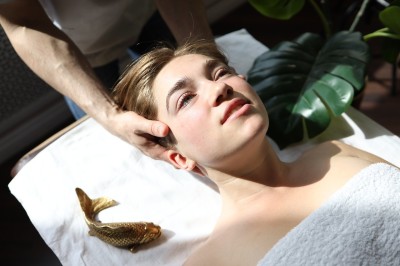
Traditions of a North Indian Wedding
In India, marriages are generally pompous affairs. There are various ceremonies that either precede or follow the actual wedding ceremony. It is considered a matter of pride to throw lavish wedding parties. While one school of thought can argue that all this amounts to a waste of time and money, there is no denying the fact that it is these customs and ceremonies that make
Indian matrimonialproceedings so interesting and attractive for everybody. Even the talk of marriage in a family is enough to trigger festivities. A lot of hard work and planning also goes into getting all the customs right and make them enjoyable for all.
Across the length and breadth of India, the flavour of marriages changes as we move from one region to other region. Also, the main customs depend on which caste, religion or community you belong to. However, there is not an iota of doubt that of all Indian matrimonials, the customs and the ceremonies related to north Indian weddings are the most colourful. There are a lot of traditions associated with north Indian marriages and as usual, there is a lot of involvement of families from both bride and the groom’s sides to carry out all customs well.
The ceremonies in a north Indian wedding begin with the function of ‘Sagaai’ or engagement. It is the first formal ceremony that takes place once the bride and the groom’s families have mutually agreed upon the alliance. This is basically a confirmation of the alliance. It involves doing ‘Tilak’ of the prospective groom by the bride’ s family and doing ‘Godh Bharaai’ of the bride by the groom’s family. These days, a ring exchange ceremony also takes place on the same day. Generally, an exchange of gifts also takes place on this day. This marks the beginning of the wedding ceremonies.
A day or two before the wedding, the ‘Sangeet’ ceremony takes place. It involves a lot of singing and dancing by both the families to celebrate the union of two families. Then, on the day of the wedding or a day prior to it, ‘kangana’ is tied on the wrists of both the bride and the groom. ‘Kangana’ is basically a bracelet made with stringing together betel nuts, tamarind and tiny shells (cockles) in the sacred thread or mouli. The ceremony is formalized by a priest and these bracelets remain tied on their wrists till the completion of all wedding rituals. They basically offer protection from any evil eye. In the henna or ‘Mehendi’ ceremony, hands of the bride and the groom are dyed red with the henna paste. It is considered very auspicious in the Indian matrimonials. Bride’s mehendi is much more intricate than the groom’s mehendi.
‘Ubtan’ or ‘Haldi’ ceremony is done on the morning of the wedding. It is a paste of herbs that is used to bathe the bride and the groom on their wedding day. On the bride’s side in a north Indian wedding, Chooda is another important ceremony. It is a set of red and cream color ivory bangles that are brought by the brides maternal uncle and aunt that adorn her wrists. This ceremony is also formalized in the presence of a priest amid the chanting of mantras.
After all these pre-wedding ceremonies of the
matrimony,
brideand groom get ready in their wedding attire for the main ceremony. Baraat that is the wedding procession of the groom reaches the bride’s venue. The groom is generally mounted on a horse or a horse-driven chariot. There is a lot of dancing in the procession. It is to express the elation of the groom’s family. The baraat is received by the elders of the bride’s family. After that a small pooja is done to welcome the groom. This is followed by ‘Jaimal’. It is the exchange of garlands between the bride and the groom. This is followed by dinner for all the guests. A lot of delicacies constitute the lavish feast of north Indian weddings. After this comes ‘bidaai’ or the taking away of the bride by the groom’s family. This is an emotional ceremony as this means that now the girl belongs to the groom’s family. All these ceremonies put together form the great north Indian weddings. The matrimony saga from across India is more or less the same in terms of the range of rituals and ceremonies.
Geetika Jain writes on behalf of
Jeevansathi.com, which is India’s fastest growing matrimonial website, provides online
Indian matrimonialclassified services. Jeevansathi.com enables users to create a
matrimonyprofile on the website and allow prospective grooms and brides to contact each other. Users can search for profiles through advanced search options on the website. Users can avail free registration and make initial contact with each other through services available on Jeevansathi.com via Chat, SMS, and e-mail.




























